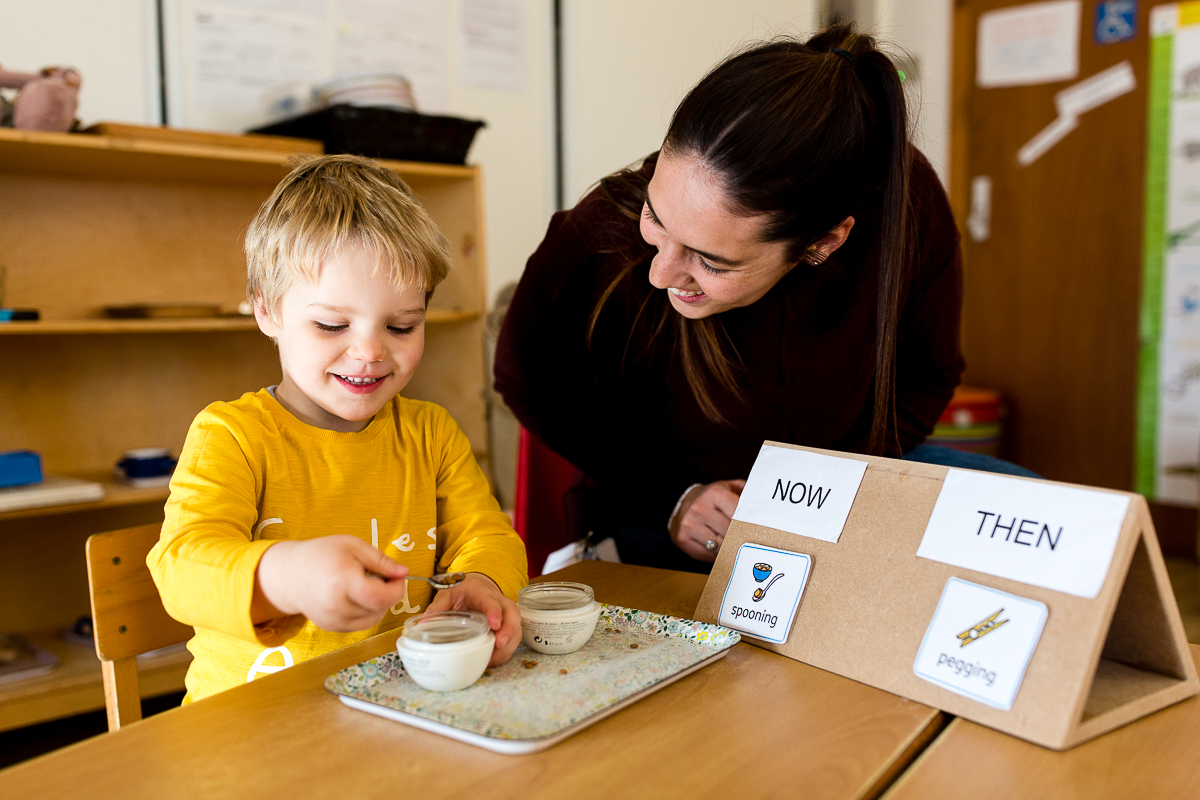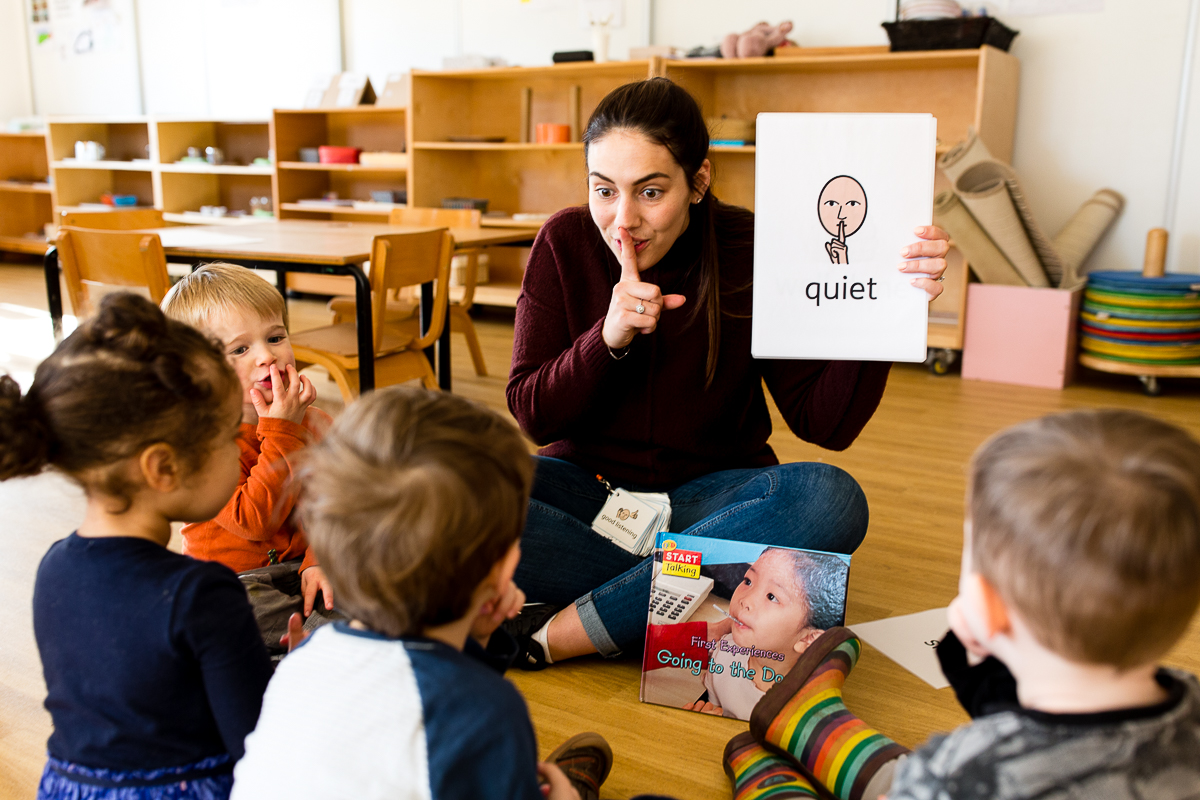
We’re all familiar with the use of emojis in everyday text message conversations with friends and family. But did you know that there’s a more practical side to these pictorial based images that can help with young children’s learning, behaviour and motivation levels?
Babies begin to learn about the connection between pictures and real objects at a very young age. Through play and exposure to language, they learn the names of these objects and gradually make links and connections between object, name and pictorial representation. This process is a natural, spontaneous and subconscious one.

Visual awareness
Young children very quickly gain an awareness of symbols and what they mean. Try showing to children the golden ‘M’ symbol used by McDonalds, or the tick used by Nike, and see if they can identify these commonly seen symbols. You can take advantage of young children’s visual awareness of symbols by incorporating them into your daily setting routine. You might use:
- a visual register where the children could put their names on the ‘happy’ or ‘sad’ sides of the board
- symbolised signage giving key messages around the setting, such as a set of symbols in the toilets showing how to wash your hands properly
- name tags (for registers, book trays, etc.) which include a symbol, such as a train, that matches the first letter of the child’s name – Tommy, for example
Helping children to feel confident
As young children begin keying into symbols, they are making a huge conceptual leap; they’re learning that a ‘picture’ can convey a message. They can decipher it on their own and put it to use. With this dawning realisation (‘I know what that says’!), their interest grows. They begin the process of decoding. A symbol can tell them to stop or walk, for example, indicating a choice that needs to be made, or show which activity is coming up next.
In the modern-day world, children are surrounded by signs and symbols. Learning how to extract meaning from these signs and symbols is fundamental to learning how to read and write.
Widgit has a set of over 18,000 well designed symbols that add support to the learning environment and motivate children. Symbol labelling, visual timetables, behavioural support and educational materials make it easier for young children to access information and feel more confident.
Symbols are not just for children with special needs. The bright images draw in all children and encourage a more independent attitude and a more thorough engagement in text.
Used in nursery schools and children’s centres across the UK for many years, Widgit Symbols, software, tools and resources save time, while delivering high quality materials and great outcomes for settings and learners.
Whatever the age of the child or their level of ability, symbols may be the key to unlocking the behaviour and communication issues you have been experiencing. They can create a significant, positive impact on the child’s quality of life and overall wellbeing, now and in the future.
Case study: The right message
Claverdon Village Nursery in Warwickshire is a daycare provider with 72 childcare places for children from birth to four years. Inspected in February 2018, it was rated Good by Ofsted and aspires to provide a safe, loving, caring and stimulating environment, where each child is nurtured, respected and empowered to achieve their full potential.
The nursery recently switched to using Widgit’s InPrint 3 software and has found it quick and easy to use. SENCO and senior deputy manager, Corinna, says it is really simple to create a whole range of symbol labelling, visual timetables, behavioural support and educational materials: ‘It is simple and fast which is critical – as we are quite often overloaded with paperwork.’
As part of the nursery’s free flow approach, Corrina has been using Widgit Symbols at key points in its environment, including labels on drawers and communication cards for the staff to wear on stretchy lanyards. Often these are used alongside other visuals, such as photographs.
‘Once you start using symbols, you have to invest a bit of time and effort, but you quickly start to see the benefits that symbols have on children,’ she says. ‘This encourages the staff team to use them more, so that symbols quickly become a habit – making the initial effort more than worth it.’
She adds that the ‘now and then’ cards have helped children who get stuck, to self-guide, making them more independent and removing the need for staff intervention. ‘The office and admin staff are very hands-on and understanding how symbols are used at a practical level is important in developing our use of symbols,’ she says.
Making sure that the choice of symbol or picture gets across the right message, is a key consideration for Corrina. For example, she chose the ‘egg’ shaped head symbols when putting together ‘feeling’ communication cards. However she also recognises that some children with specific communication needs may need a more tailored approach.
The multiple choices for some symbols and the ability to rename a symbol, together with the ability to add your own photographs, allows Corrina to choose and adapt the correct symbol and tailor the resources made for every scenario, which provides infinite possibilities.

Case study: Routines for wellbeing
Case study: Kineton Playgroup is a Warwickshire based, term-time nursery, with breakfast and after school club provision. Nursery sessions are morning, afternoon, or all day for children aged two to five years. The nursery team also support several children with special educational needs and/or disabilities and children who speak English as an additional language.
Standing alongside Kineton Primary School, the nursery operates from a purpose-built building with two rooms, an enclosed area for outdoor play along with a forest school.
The space provides an excellent venue for children to participate in a wide variety of activities, supervised by experienced staff.
Anna Perry deputy manager (Childcare & Education), team leader and special educational needs co-ordinator and the team at Kineton Playgroup use Widgit Symbols every day with children to enhance learning and increase understanding. Often this involves using symbols alongside Makaton and other visuals with all the children – not just those with special needs.
Anna says: ‘For children who find verbal communication difficult or who are anxious, I have seen symbols bring huge benefits. For example, with one child who got very anxious and whose behaviour would flare-up, symbol emotion cards were very useful in supporting a conversation with him about how he was feeling. The simple process of flicking through the symbols helped calm him down. Following this up with symbols to support everyday routine helped reassure him further.’
Anna quite often uses Widgit’s InPrint 3 software to create routine cards to send home with children for parents to use with them. For example, these can be created to support a routine for leaving the house in the morning. Using symbols at home in this way has a positive impact on children and they tend to arrive in a much calmer manner, ready to start the day.
As more children with specific needs join the nursery, Widgit Symbols are becoming increasingly helpful. Anna says: ‘They are being used to support routine instructions via now and next boards and in noisy and crowded situations for reaching those who are struggling.’
For the three or four children who speak English as an additional language, symbols help Anna and the nursery staff to increase understanding and reinforce frequently used words such as ‘coat’, ‘stop’, as well as encouraging some of the children who don’t want to speak English, to start to try a few words.
Anna has also seen benefits of symbols in supporting the transition to school and the huge changes that children need to deal with. This is an area, that with more funding, Anna would like to see more focus on – building on the everyday use of symbols throughout all stages of the child’s development.
Find out more here
Sue White is senior educational consultant at Widgit









